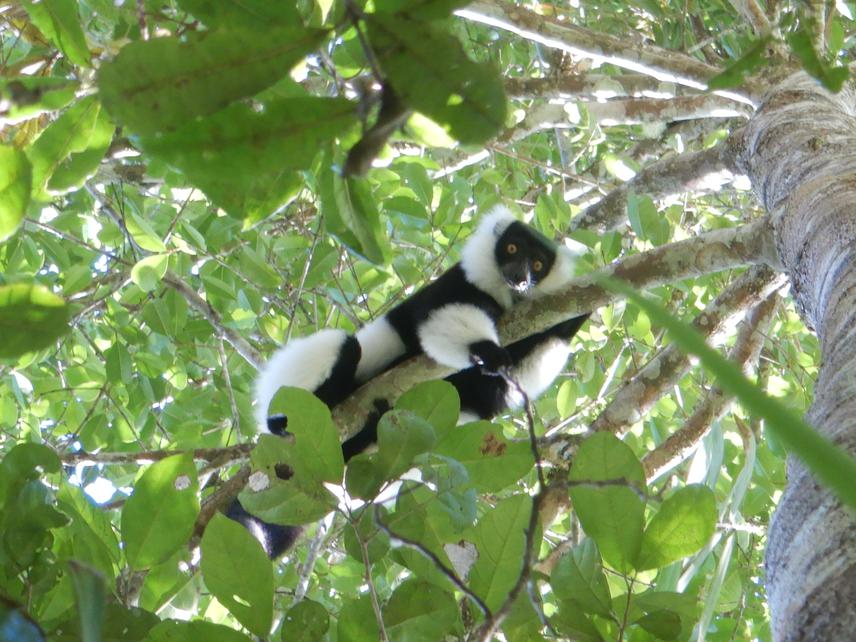Nantenaina Rindra Harilanto
Other projects
Frugivorous primates may be attracted to plant galls fruit-like shape, allowing them to obtain additional nutrients in their diet. Primates’ attraction to galls can then confer advantages to infected plants by increasing seed dispersal by these frugivores.
My overarching goals are to:
(1) document the importance of galls in the lemur diet.
(2) characterize the role of galls in attracting lemur frugivores.
(3) determine how the presence of galls on trees influences the seed dispersal of these trees by lemurs, in terms of quantity of seeds dispersed and germination post-dispersal.

V. variegata resting. ©Nantenaina Rindra Harilanto.
I have already collected sufficient data to address the first two objectives. The remaining activities presented in this proposal pertain to Objective 3, with a focus on the seed dispersal by Varecia variegata of Grewia cuneifolia (Malvaceae), one of its most preferred food plant species during my previous research. In this project, we aim to determine how the presence of galls on trees influences the seed dispersal of their food plants. We will conduct direct observations of the patterns of seed dispersal by this lemur species in the rainforest of Ihofa in eastern Madagascar, determine the source of the seeds that they dispersed, and assess seed germination rates. Besides its potential to enhance scientific understanding of the ecology of V. variegata, this project is also expected to provide new perspectives relevant to lemur conservation in their natural habitats. Their mutualistic interactions with plants can be a powerful instrument to be considered for a reforestation project to help improve the habitat of V. variegata.
Team tracking the lemur's activity. ©Nantenaina Rindra Harilanto.
The Ihofa rainforest, where this project will occur, has been subjected to intense anthropogenic threats, such as shifting agriculture, hunting, and deforestation, and is currently fragmented. Better understanding the multilevel interactions of lemurs with their environment can provide tools that would be useful for framing and/or reinforcing solutions for lemur conservation. This project will also increase local capacity to carry out future conservation efforts in this region through the training of local villagers, who will actively participate in the different aspects of this project as research technicians. I will train them in different field research methods and in collecting rigorous scientific data. As the current site represents an interesting focus to address several ecological and conservation questions, these skills are expected to be useful for them in getting employment with other researchers as well in the future.